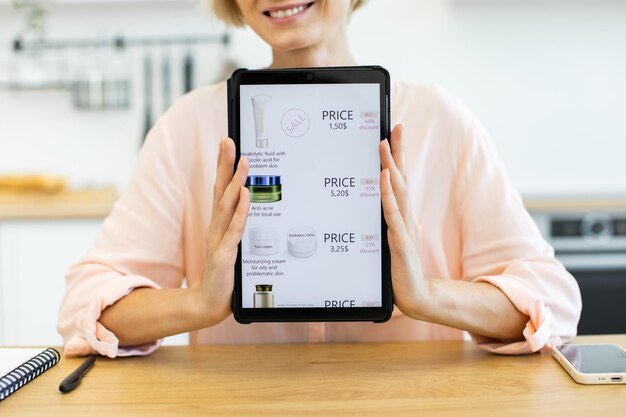Mastering Buying Guides: Comparing Apples to Oranges Effectively

Buying Guides: The Art of Comparing Apples to Oranges – A Practical Guide teaches consumers how to make informed purchase decisions by effectively evaluating different product options using a structured and comprehensive approach.
Navigating the world of purchasing can be overwhelming, especially when faced with a myriad of options that seem vastly different. Understanding Buying Guides: The Art of Comparing Apples to Oranges – A Practical Guide is essential for making informed decisions and ensuring you get the best value for your money.
Understanding the Basics of Buying Guides
Buying guides serve as invaluable tools for consumers, offering a structured approach to evaluating products. They help to sift through marketing buzz and present clear, concise information that aids in making informed purchasing decisions. By understanding the basics of these guides, shoppers can confidently navigate the marketplace.
What is a Buying Guide?
A buying guide is a comprehensive resource designed to assist consumers in making informed purchasing decisions. It typically includes detailed product information, comparisons, and expert opinions to guide shoppers through the selection process.
Why Use a Buying Guide?
Using a buying guide can save time, reduce the risk of making a poor purchasing decision, and ultimately help you find the best product for your needs. These guides offer a structured way to compare options and understand key features.
- Save Time: Efficiently narrow down your options.
- Reduce Risk: Make informed choices based on facts.
- Find the Best Value: Ensure you get the most for your money.
Effective utilization of buying guides empowers you to make confident, well-informed decisions. By breaking down complex information into digestible pieces, these guides provide clarity and direction in your shopping journey.

Identifying Your Needs and Priorities
Before diving into any buying guide, it’s crucial to identify your specific needs and priorities. Clearly defining what you’re looking for ensures that you can effectively evaluate different product options and choose the one that best fits your requirements.
Defining Your Needs
Start by asking yourself fundamental questions about what you need the product to do. Consider your lifestyle, habits, and the specific problems you’re trying to solve to establish a clear understanding of your needs.
Setting Priorities
Once you’ve defined your needs, prioritize them. Determine which features are essential and which are merely desirable. This will help you focus your research and avoid getting sidetracked by unnecessary bells and whistles.
- Essential Features: Must-have functionalities for your needs.
- Desirable Features: Nice-to-have enhancements that add value.
- Budget Considerations: How much are you willing to spend?
Understanding and prioritizing your needs allows you to approach buying guides with a specific focus. This targeted approach streamlines the decision-making process, ensuring you select a product that aligns perfectly with your requirements.
Understanding Key Product Features and Specifications
A crucial step in effectively using buying guides involves understanding key product features and specifications. This knowledge empowers you to compare different products accurately and make an informed choice based on their respective merits.
Deciphering Technical Specs
Take the time to understand the technical specifications listed in the buying guide. Look up any unfamiliar terms and ensure you comprehend the implications of each specification for the product’s performance.
Comparing Features
Compare the features of different products side by side. Focus on the ones that align with your prioritized needs to quickly identify the standouts and potential deal-breakers.
- Performance Metrics: How well does the product perform?
- Durability: How long will the product last?
- Compatibility: Does it work with your existing systems?
By delving into product features and specifications, you transition from a passive reader of buying guides to an active, informed evaluator. This deeper understanding ensures that your purchasing decisions are grounded in a robust assessment of product capabilities.
Evaluating Reviews and Testimonials
Reviews and testimonials offer invaluable insights into the real-world performance and reliability of products. Assessing these sources while consulting buying guides helps you develop a comprehensive understanding of the product’s strengths and weaknesses.

Analyzing Reviews
Read a variety of reviews from different sources to get a balanced perspective. Pay attention to recurring themes and common issues mentioned by multiple users to identify potential red flags.
Considering Testimonials
Testimonials often provide more detailed accounts of user experiences. Look for testimonials that resonate with your needs and offer specific examples of how the product has performed in similar situations.
- Multiple Sources: Reviews from various platforms.
- Recurring Themes: Common issues or praises.
- Detailed Accounts: Specific examples of product use.
Integrating reviews and testimonials into your buying process enriches your understanding beyond the technical specs. This holistic view prepares you to make a purchase decision that aligns with real-world performance and user satisfaction.
Avoiding Common Pitfalls When Using Buying Guides
While buying guides are useful, it’s essential to be aware of potential pitfalls to avoid being misled. Recognizing and sidestepping these issues ensures you gather unbiased information and make well-informed decisions.
Bias and Advertising
Be mindful of potential bias in buying guides, especially if they are sponsored or affiliated with specific brands. Look for guides that maintain an independent and objective perspective.
Outdated Information
Ensure that the buying guide you’re using contains up-to-date information. Product specifications, prices, and availability can change rapidly, so verify the currency of the data before making any decisions.
- Sponsorship Awareness: Check for affiliations.
- Information Age: Verify the publication date.
- Cross-Referencing: Compare info from multiple sources.
Staying vigilant against biased or outdated information is crucial for the effective use of buying guides. A critical approach ensures that you’re relying on reliable data to inform your purchase decisions.
Making the Final Decision
After diligently researching and evaluating products using buying guides, you’ll arrive at the crucial step of making the final decision. This involves synthesizing all the collected information and factoring in your personal preferences.
Revisit Your Priorities
Review your list of needs and priorities to ensure the chosen product aligns with your original requirements. This helps solidify your decision and avoid buyer’s remorse.
Trust Your Instincts
Sometimes, despite all the research, you may have a strong feeling about a particular product. Trust your instincts, but always ensure they are based on a rational evaluation of the available information.
- Alignment Check: Does it meet your needs?
- Gut Feeling: Does it feel like the right choice?
- Long-term Perspective: Will it remain suitable over time?
Blending objective data with personal intuition allows for a balanced, confident decision-making process. This final step transforms research into action, leading to a satisfying purchase that meets your needs and preferences.
| Key Point | Brief Description |
|---|---|
| 🎯 Define Needs | Identify specific requirements before research. |
| 🔍 Compare Specs | Evaluate features and technical details closely. |
| ⭐ Read Reviews | Check user feedback for real-world performance insights. |
| ✅ Final Check | Ensure alignment with needs and priorities. |
Retractable FAQ Section
▼
A buying guide’s main purpose is to assist consumers in making informed purchasing decisions by providing structured information and comparisons of different products.
▼
Identify your needs by asking yourself what you want the product to do, considering your lifestyle, and determining which problems you need to solve.
▼
Look for recurring themes, multiple sources, and detailed accounts of user experiences to get a balanced perspective on the product’s performance.
▼
Avoid bias by checking for sponsorships, ensuring the guide maintains an independent perspective, and comparing information from multiple sources to cross-reference claims.
▼
The last step before making a purchase is to revisit your priorities and ensure that the chosen product aligns with your original needs and requirements.
Conclusion
Mastering the art of using buying guides effectively transforms the shopping experience, making it less daunting and more rewarding. By understanding the purpose of these guides, identifying your specific needs, and critically evaluating the information presented, you can confidently compare options and make well-informed decisions that align with your priorities. Ultimately, this empowers you to secure the best value and satisfaction from your purchases.





